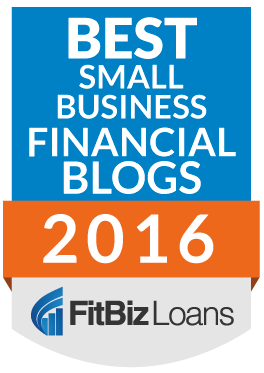Sustainable competitive advantage — a goal which will be always sought and ever elusive in business. It is difficult to define. Yet, we often know it when we see it.

Less traveled distribution channels can become a large competitive advantage.
People attempt to draw-up lists in an effort to understand and remember the types of competitive advantage. One common one is the competitive advantage of “network effects” — where a multi-constituent model becomes more entrenched the more users there are (Microsoft operating systems, Google search, Facebook, Visa/Mastercard). Another common one is “economies of scale” — particularly in older industries such as matches, cigarettes, and steel. (Maybe even in the future market for batteries according to Elon Musk and Tesla). Another one to add to the list, in my opinion, is competitive advantage which develops by owning or perfecting a unique distribution channel.
Competitive Advantage With Your Own Channel
A unique distribution channel can be a great way to differentiate your company and build a competitive advantage, often in industries where the product or service itself may be at risk of being undifferentiated (like some financial services products). If your company can develop a more effective or less expensive channel to bring your product or service to the marketplace, you can develop a big advantage over companies that do not have your distribution channel. It is even better if there is some reason why your competition cannot utilize your channel because of channel conflict (State Farm may have difficulty selling directly like Geico because their agents would get upset) or the expense of building out the distribution channel (Apple stores or Coca-Cola bottling plants). Owning a distribution channel can also be very lucrative, such as the big three television networks or a city’s newspaper during the last century. Or, Internet search is a lucrative channel thus far in this century.
The flip side is also true. If you do not own your distribution channel, your business just became much more difficult. I see this all the time as small product companies get eaten alive by retail chains who capture too much of the value for distributing product through their channel. Constant price negotiation, slotting fees, terrible payment terms, all make selling your product through the retail channel very difficult. Unless, of course, you are P&G and can negotiate with equal weight with the retail channel. On the other hand, I have also seen some companies (particularly food companies) grow their revenues very quickly by utilizing the existing retail channels (club stores, etc.), so there is always a counter point to every business strategy.
Distribution as a Competitive Advantage
There are many examples of large businesses that were built where a unique distribution channel was a core piece of the puzzle and it made the company strong and effective for a long time. Here are some examples:
- Coca-Cola. Most people list the brand as a primary reason for its success, but I believe it was the power of the coca-cola bottling network and distribution that placed Coke everywhere a customer could possibly want to buy. A start-up today could never replicate Coke’s distribution network, making it a huge competitive advantage even in an era where the product itself may be waning in popularity.
- GEICO. A direct sales model to government employees (initially and now to everyone), cutting out the expensive insurance agent, has been and still is the competitive advantage of GEICO. The company reinvests the cost savings from having a less expensive channel into lower car insurance premiums, which becomes a virtuous cycle for the company.
- State Farm. Before there was direct sales of car insurance, State Farm revolutionized the distribution channel for car insurance by utilizing existing networks (farmer associations) as explained in a nice book about the history of the company, The Man from Myrna. USAA is doing this today by focusing on military personnel and their families.
- Apple Stores. Very unconventional when they made the investment, the Apple Stores have created a distribution channel that is a big advantage over other companies having to work through the retail network. Apple can control the experience, create scarcity when they want, fix problems, and raise the level of service because they control the channel all the way to the customer.
- Tesla. Tesla decided to not work through car dealerships and to sell directly. I love that it is different, because that is the first step to being better. Time will tell if the dealership network is a necessary component to car sales or not.
- Edward Jones. A stock brokerage that has focused on building a broker network in small towns across America. The other brokerage companies were not focused on small town America giving Edward Jones a wide open territory to approach and a safe base of profitable operations as a strong competitive advantage.
- McDonald’s and the franchise network as a distribution channel. Although this may stretch the idea a bit too far, I believe the franchise network of McDonald’s was an innovative (at the time) way to build out a network of stores with less capital from the parent company and a faster way to build a large network. By perfecting the franchise model, it gave the company a unique advantage beyond just their food as the food is much more difficult to differentiate.
- Peet’s Coffee. On a smaller scale, I was able to observe how Peet’s Coffee went about expanding beyond their coffee stores because I live in the San Francisco Bay Area and my wife worked at Peet’s. Freshly roasted coffee makes a big difference in coffee quality and was a key component of the Peet’s strategy. However, to sell coffee through retail often meant that the coffee could sit in warehouses and store shelves for up to six months. That was not good enough for Peet’s. To take better control over their coffee’s freshness and quality, Peet’s chose to invest in their own direct-store-distribution (DSD) network of trucks and drivers. This was an expensive and very unconventional decision that many companies are not willing to make. It worked out beautifully for Peet’s. The investment paid off as DSD became the profit-driver for the whole company and the coffee stores became a marketing mechanism. It became a competitive advantage for Peet’s and part of what made the company unique — beyond just a chain of coffee stores.
If I were starting a business, I might first focus on having a unique distribution channel and then figure out what product or service could be sold through that channel. In any case, I recommend that all business owners and entrepreneurs think hard about the distribution channel they are using, why they are using it, and how they can create sustainable competitive advantage through distribution channels.
Related Posts and Topics:
- Strategy follows structure
- Elusive moats of competitive advantage
- Business moat — assessing the width
- Competitive Advantage and company culture


 I am an investor at Greybull Stewardship, an
I am an investor at Greybull Stewardship, an 
 Sign Up
Sign Up RSS Feed
RSS Feed